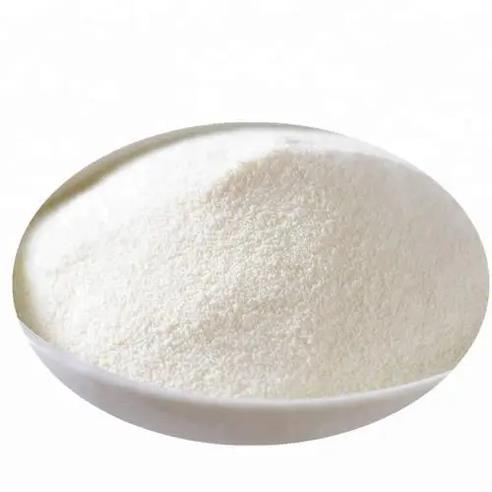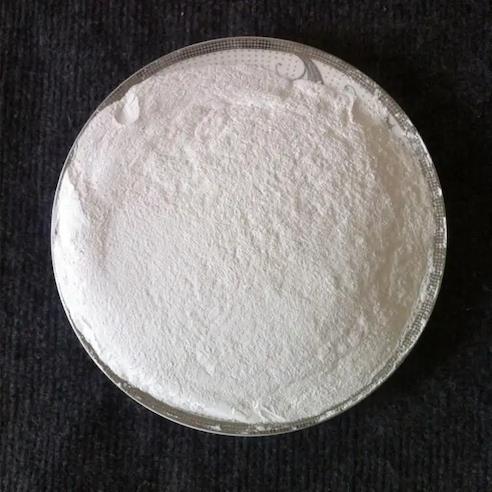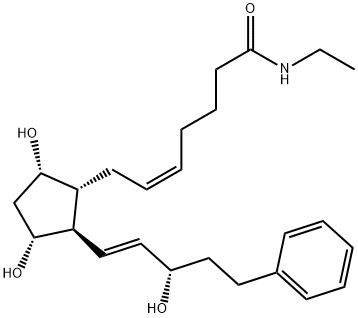Bimatoprost: Its bioactivity, mechanism, and pharmacology
Mar 20,2023

Figure 1 Appearance of bimatoprost.
Bioactivity
Since bimatoprost mimics the activity of the prostamides, it is also a potent and efficacious ocular hypotensive agent [1]. Bimatoprost is not only highly efficacious but is also long-acting. A single dose of bimatoprost 0.03% reduced
The mechanism of action of bimatoprost has been studied in normal human subjects [2]. Bimatoprost mildly stimulates the rate of aqueous humor flow during the day (13%) and at night (14%). Its ocular hypotensive action is due primarily to a 26% reduction in the tonographic resistance to outflow. Thus, bimatoprost enhances the pressure-sensitive outflow pathway. Additional beneficial effects may include an increase in the rate of flow via the pressure-insensitive outflow pathway (sometimes called the “uveoscleral outflow pathway”) and a lowering of the extraocular recipient pressure (sometimes called “episcleral venous pressure”). Reduction of tonographic resistance to aqueous humor outflow reduces steady-state intraocular pressure, an effect that is beneficial for the treatment of glaucoma. In addition to its effect on steady-state intraocular pressure, reduction of resistance allows the eye to recover more quickly from transient intraocular pressure elevations. The former effect is common to all ocular hypotensive drugs, but the latter effect is an exclusive property of drugs that reduce outflow resistance, such as bimatoprost. No meaningful activity for bimatoprost was found at any of the targets, despite its potent activity in the feline iris sphincter preparation where an EC50 value of 34 nM has been obtained. This further supports the concept that the target receptor is pharmacologically unique, and that bimatoprost effects on intraocular pressure cannot be ascribed to interaction with adrenergic, cholinergic, cannabinoid, dopaminergic, or prostanoid receptor stimulation. The high scleral permeability coefficient Papp is a likely contributing factor to the rapid onset and long-acting ocular hypotensive profile of bimatoprost.
Pharmacology
Systemic exposure to bimatoprost was determined by administering a 0.03% dose bilaterally and once daily, in the evening, to normal human volunteers [3]. Fifteen subjects were enrolled (14 males, 1 female) and were between the ages of 18 and 45. Visits were at prestudy and days 1, 7, and 14. Blood samples for pharmacokinetic analysis were collected on days 1, 7, and 14 at the following time points: 0 (predose), 5, 10, 20, 30, and 45 min (postdose) and 1, 1.5, 2, 3, 4, 6, 8, 12, 16 and 24 hr postdose. Blood concentrations were quantified by a validated liquid chromatography–tandem mass spectrometric method, which employed deuterated compounds as standards (protocol at Federal Drug Administration). These results indicate that detectable blood concentrations of bimatoprost rapidly appear in blood and decline rap- idly after achieving Cmax. The Cmax values translate into a concentration of approximately 2 × 10 nM in blood, which is insufficient to elicit a meaningful pharmacological effect. No measurable free acid metabolite was detected, indicating that extensive systemic and ocular conversion to the putative free acid metabolite (17-phenyl PGF2α) does not occur. Following intravenous administration of bimatoprost to human volunteers, the major route of metabolism involved hydroxylation, β-oxidation products were not identified.
[2]Brubaker. Mechanism of Action of Bimatoprost (LumiganTM). Survey of ophthalmology. 2001,
[3]Woodward et al. The
- Related articles
- Related Qustion
- What kind of drug is bimatoprost? Jan 2, 2025
Bimatoprost, a synthetic analogue of endogenous prostamides, is in development as a topical ocular hypotensive agent for treating glaucoma and ocular hypertension.
- Bimatoprost for the treatment of eyelash, eyebrow and scalp alopecia Feb 7, 2024
Bimatoprost is used to treat ocular conditions and promote eyelash growth by binding to prostamide receptors, with rapid absorption and low systemic exposure.
- The uses and side effects of Bimatoprost Sep 17, 2019
Bimatoprost, also known as Latisse or Lumigan, belongs to a group of drugs called prostamides, which are synthetic structural analogs of prostaglandin. Bimatoprost, marketed by Allergan, is administered in an ophthalmic solution and has the
N-Bromosuccinimide (NBS) is a convenient source of bromine for both radical substitution and electrophilic addition reactions.....
Mar 20,2023Chemical ReagentsThe Rotundine (C21H25NO4), also known as fumarate, that is, l-tetrahydropalmatine (l-THP), is an alkaloid extracted from the dried alkyne stem of the W.T.Wang of the poppy plant Corydalis yanhusuo.....
Mar 20,2023APIBimatoprost
155206-00-1You may like
- Bimatoprost
-

- 2025-12-18
- CAS:155206-00-1
- Min. Order:
- Purity: 0.99
- Supply Ability:
- Bimatoprost
-

- $0.00 / 1g
- 2025-12-18
- CAS:155206-00-1
- Min. Order: 1g
- Purity: 99%min
- Supply Ability: 100g
- Bimatoprost Cas
-

- $5.00/ KG
- 2025-12-18
- CAS:155206-00-1
- Min. Order: 1KG
- Purity: 99% hplc
- Supply Ability: 500TONS






